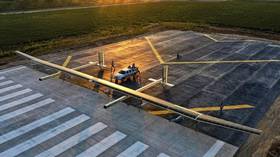China aims to unravel the sun’s secrets

China has successfully launched a satellite for observing solar activity that will be instrumental in predicting space weather, the country’s Aerospace Science and Technology Corporation (CASC) announced on Sunday.
The satellite, which is called Advanced Space-Based Solar Observatory (ASO-S), was sent to space from the Jiuquan Satellite Launch Center in northwest China on a Long March-2D rocket, CASC said. According to China Daily, the ASO-S is China’s first full-scale, dedicated instrument for studying the Sun.
The 859-kg probe will start operations at an altitude of 720-km to study how the solar magnetic field is linked with solar flares and coronal mass ejections – which are massive blasts of plasma. This is expected to help gather the data needed to better forecast space weather. Such information is of significant utility because various solar phenomena are capable of knocking out sensitive electronic equipment on Earth.
The satellite is designed to operate for more than four years and is equipped with three payloads. It will also accumulate and transmit back to Earth about 500 gigabytes of data per day.
A major advantage of the space telescope is that it cannot be impeded by the planet’s rotation and day cycle.
“ASO-S is capable of probing the Sun 24 hours daily for most of the year,” Gan Weiqun, the satellite’s principal scientist, told Xinhua. “Its longest daily time-out is no more than 18 minutes when briefly running through the shadow of Earth each day from May to August.”
The telescope itself was dubbed Kuafu-1, after a giant in Chinese mythology who chased the Sun.
The ASO-S mission builds on the success of the Chinese Hydrogen-Alpha Solar Explorer, a small experimental satellite launched in October 2021 that was meant to study solar flares. This probe was also delivered to space aboard a Long March 2D rocket, reaching an altitude of about 517km.













